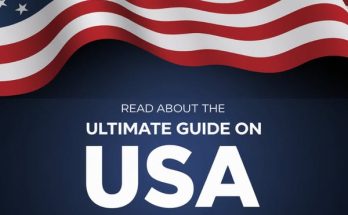Explore Australia’s breathtaking landscapes, dynamic cities, and thriving economy that allure countless individuals in pursuit of professional opportunities. If you’re contemplating a career move to Australia, here’s a comprehensive guide to assist you through the maze of requirements, visas, and procedures.
Working in Australia promises a fulfilling journey, marked by career growth, personal development, and an enriching cultural experience. With meticulous planning and preparation, you can seamlessly navigate the process and embark on a successful venture in Australia.
Table of Contents
VISA REQUIREMENTS FOR WORKING IN AUSTRALIA
Australia provides a range of visa options tailored to individuals seeking employment in the country. The choice of visa hinges on your skill set, qualifications, and work background. Here’s an overview of some common visa types:
1. Skilled Independent Visa (Subclass 189)
The Skilled Independent Visa is a Points-tested visa for skilled professionals. Unlike some visas, it doesn’t necessitate employer sponsorship. However, applicants must secure nomination from a relevant skilled occupation on the Skilled Occupation List (SOL) and meet specific points-based criteria. Points are awarded based on age, qualifications, work experience, English proficiency, and other factors.
Eligibility Criteria:
– Occupation listed on the Skilled Occupation List (SOL).
– Meet minimum points threshold based on age, skills, and other factors.
Duration:
– Grants permanent residency status.
2. Skilled Nominated Visa (Subclass 190)
Similar to subclass 189, this visa requires sponsorship from an Australian state or territory government. It’s beneficial if your occupation is on the SOL but not in high demand nationwide. Eligibility criteria and nomination processes vary by state or territory.
3. Temporary Skill Shortage Visa (Subclass 482)
This temporary visa addresses skills shortages in specific occupations. Employers sponsor skilled workers for designated positions, and the visa duration varies based on the occupation and circumstances.
4. Employer Nomination Scheme (Subclass 186)
This visa enables employers to sponsor skilled workers for permanent residency. Employers must demonstrate that the position cannot be filled by an Australian citizen or permanent resident. Sponsored workers must meet specific skill and experience requirements.
5. Working Holiday Visa (Subclass 417 or 462)
Ideal for individuals aged 18-30, this temporary visa allows work and travel in Australia for up to 12 months. Certain nationalities qualify for extensions, extending stays to 24 months, making it perfect for those seeking short-term work experiences and cultural immersion.
6. Temporary Graduate Visa (Subclass 485)
Overview:
– Allows recent graduates to temporarily work, study, or live in Australia.
– Available in two streams: Graduate Work Stream and Post-Study Work Stream.
Eligibility Criteria:
– Completed an eligible qualification in Australia.
– Meet health and character requirements.
Duration:
– Duration varies based on the stream and qualification.
Additional Visa Options:
– Partner Visas: For partners of Australian citizens or permanent residents.
– Student Visas: For full-time students enrolled in Australia.
– Business Innovation and Investment Visas: For entrepreneurs and investors.
Keep in mind that visa requirements and processes may change. Stay informed by checking official government websites and seek professional advice if necessary.
WORKING IN AUSTRALIA: PROCEDURES
The procedures for working in Australia vary depending on the visa type. However, here’s a general overview of the steps involved:
1. Research and Choose a Visa:
– Explore available visa options suitable for your skills, qualifications, and work experience.
– Refer to the Australian Department of Home Affairs website for detailed visa information.
– Consider the Skilled Occupation List (SOL) for skilled visa applications.
2. Check Eligibility Requirements:
– Review specific eligibility criteria for your chosen visa.
– Ensure you meet all criteria, including age, skills, qualifications, English proficiency, and health standards.
– Gather necessary documents to support your application.
3. Apply for the Visa:
– Lodge your visa application online via the official Australian immigration portal.
– Pay the required visa application fee.
– Follow instructions and requirements for your chosen visa category.
4. Attend Medical Examination (if required):
– Some visa categories mandate a medical examination by a designated panel physician.
– The examination ensures compliance with Australia’s health standards.
5. English Language Testing (if required):
– Depending on the visa category, demonstrate English language skills through tests like IELTS or PTE.
– Achieve the required score specified for your chosen visa.
6. Visa Processing:
– Processing times vary based on the visa category, nationality, and current volume.
– Be patient and await processing by the Department of Home Affairs.
7. Visa Outcome:
– The Department of Home Affairs notifies you of the visa application outcome.
– Upon approval, receive your visa grant, allowing you to travel to Australia and commence work.
Additional Procedures:
– Skills Assessment: Some visas require assessment of skills and qualifications by a relevant Australian authority.
– Sponsorship: Certain visas necessitate sponsorship from an Australian employer or state/territory government.
– Police Clearance: Provide a police clearance certificate from your home country if required.
– Travel and Health Insurance: Arrange insurance to cover your stay in Australia.
Working in Australia offers a rewarding experience with ample career opportunities, cultural immersion, and a high standard of living. By following these procedures diligently, you enhance your chances of securing a visa and realizing your dream of working in Australia.

